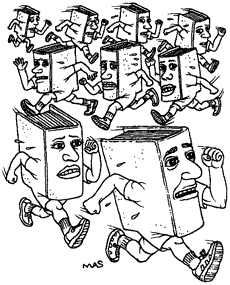from Slate (lifted from Michelle Gagnon, author of the great book BONEYARD)
The Book Industry’s Best-Seller ListsWhat are they, and why do they matter so much?
Posted Thursday, Sept. 3, 1998, at 3:30 AM ET

These days, it seems as if half the books in bookstores have the word “best seller” or some variant on the cover or the flap copy, as in “the best-selling author of …” But what does that mean? About as much as the phrase “original recipe” does on a jar of spaghetti sauce. Neither the government nor the publishing industry regulates the use of the term, and besides, there are many different kinds of best-seller lists published every week in the United States. There are the major national lists (the New York Times, theWall Street Journal, USA Today, and Publishers Weekly) and the major regional lists (the Washington Post, the San Francisco Chronicle, the Los Angeles Times, the Boston Globe, and the Chicago Tribune). There are lists that compare sales at chain stores with sales at independent stores. There are romance lists, business lists, African-American lists, religious lists, health lists, and children’s lists.
What is a best-seller list? It is a ranking of the relative sales of particular kinds of books at certain groups of stores within a one-week period. Best-seller lists tell us not which books sell the most, in absolute terms, but which fiction, nonfiction, or advice books sell the fastest at the bookstores list makers think deserve attention. A how-to book that sells 20,000 copies in one week will shoot to the top of the best-seller lists, whether or not those are the only copies it ever sells. A novel that sells 200 copies a week for 10 years will never appear on the lists, because each week it will be beaten by faster-selling books.
